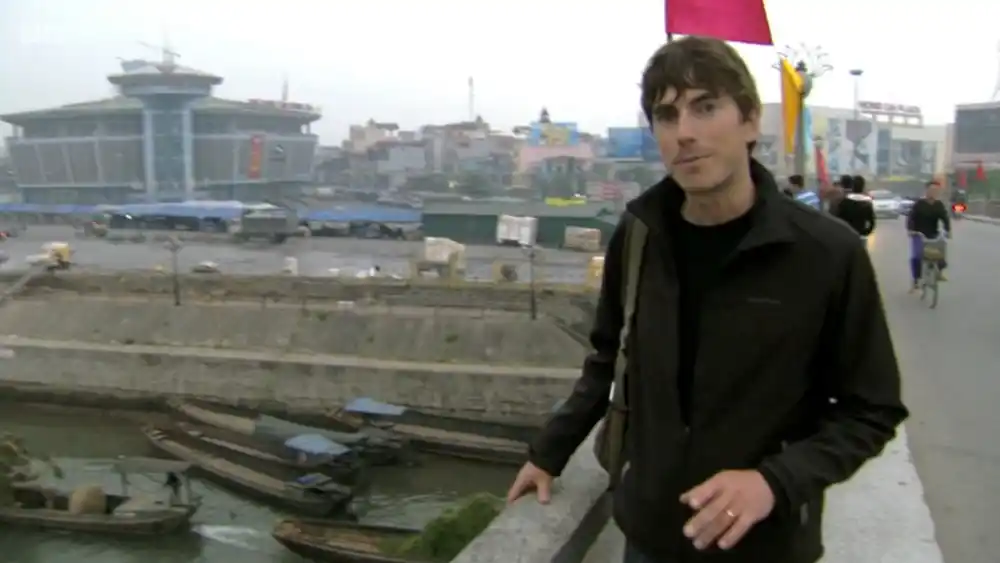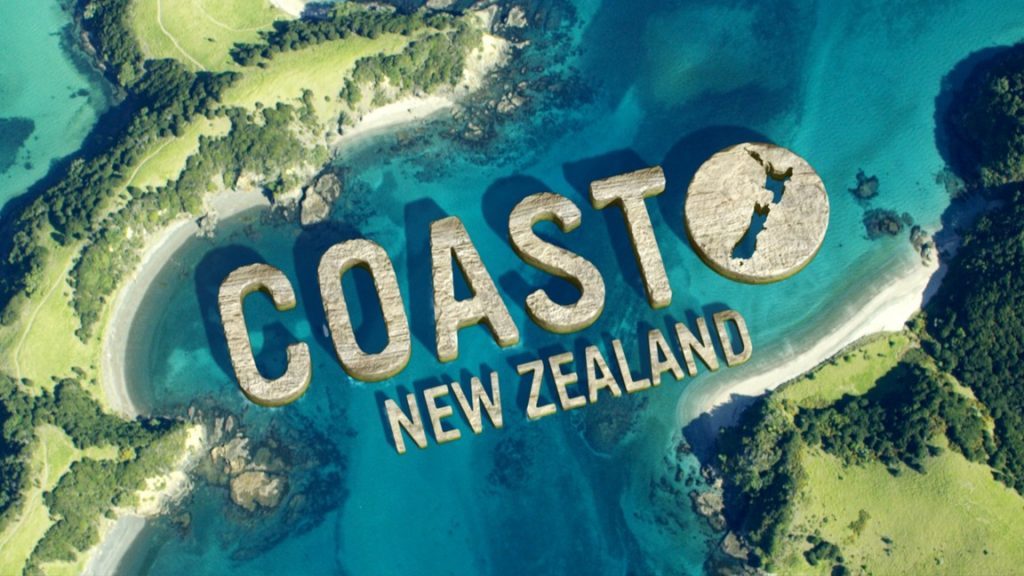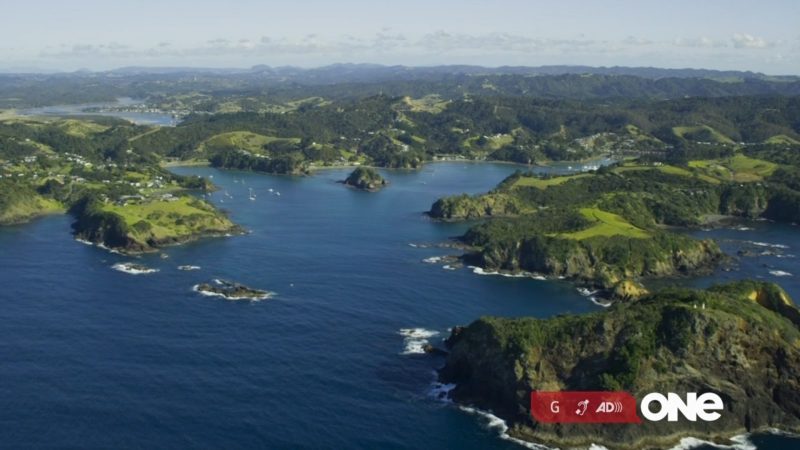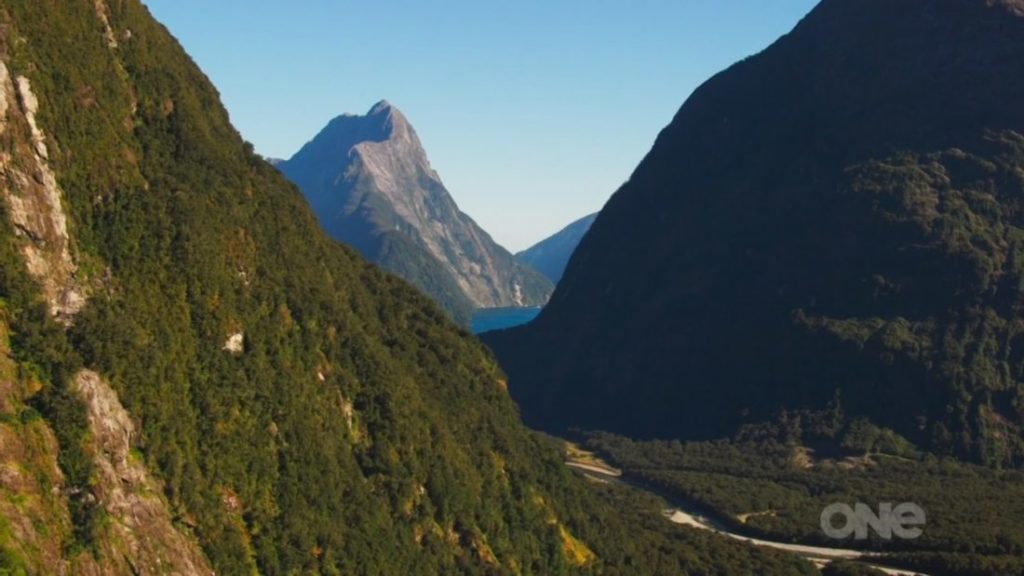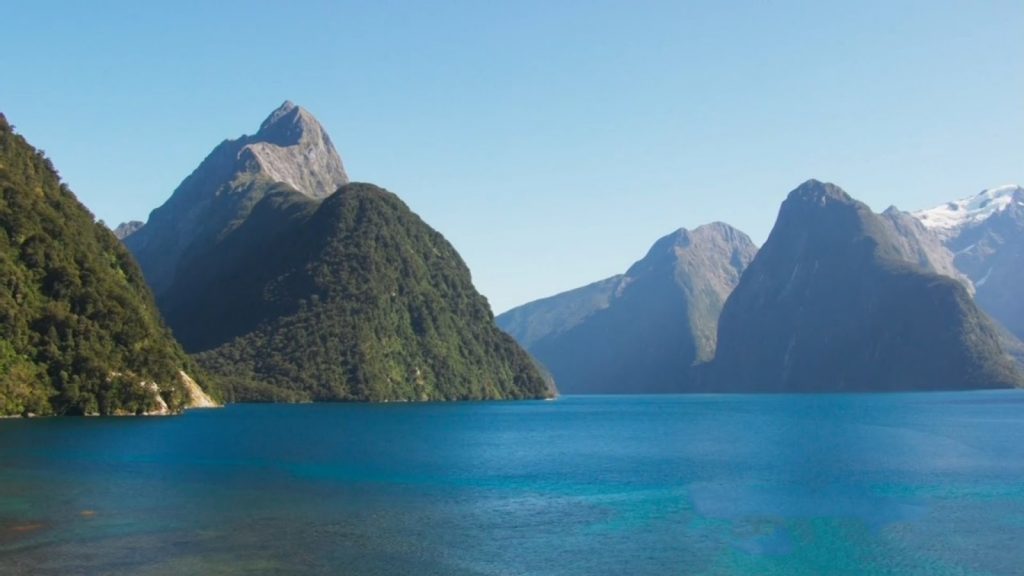Tropic of Cancer with Simon Reeve Episode 6 – Embarking on the final chapter of his grand global odyssey, Simon Reeve sets out to traverse the Earth along the Tropic of Cancer, the geographical line that delineates the northernmost boundary of the tropics. This expedition serves as the concluding part of a monumental trilogy, following his previous travels around the Tropic of Capricorn and the Equator. Simon’s last segment of this captivating journey unfurls in the dense, verdant jungles of Southeast Asia, eventually reaching its crescendo in Hawaii, a place often described as a tropical utopia. However, this paradise isn’t without its imperfections, as we’ll later discover.
Originally intending to follow the Tropic of Cancer through China, Simon’s plans are thwarted by governmental restrictions. Unfazed, he takes a detour to uncover the ever-growing influence of China in its neighboring countries, Laos and Vietnam. In Laos, Simon delves into local culture and gastronomy, where he gets a taste of some intriguing native dishes—roast squirrel that leaves you wondering if it’s actually rat, and caterpillars that challenge the Western palate.
Vietnam offers its own set of revelations, including an unsettling discovery: the cruel confinement of moon bears. These majestic creatures are held captive and farmed for their bile, a key ingredient in traditional Eastern medicines. The experience serves as a stark reminder of the ethical complexities often lurking beneath cultural practices.
Simon’s next destination is Taiwan, where he visits a unique institution—the Tropic of Cancer Primary School. Here, he meets an extraordinary group of children who rank among the world’s highest academic achievers, blending education with inspiration.
Finally, the adventure concludes in the Hawaiian Islands. Though often portrayed as a pristine tropical paradise, Simon finds a darker side. Environmental degradation has taken its toll, tainting some of the island’s beaches as among the most polluted globally.
This expedition represents the pinnacle of Simon’s endeavors, capping off his trilogy of explorations into the fascinating, diverse, and often complicated tropics. It stands as his most challenging, extensive, and ambitious journey to date, offering a rich tapestry of experiences that open up new perspectives on our complex world.
Tropic of Cancer with Simon Reeve Episode 6
Simon Reeve’s epic journey traversing the Tropic of Cancer showcases the beauty, hardship, and endangered wildlife of this captivating region. As the northern boundary of Earth’s tropics, the Tropic of Cancer passes through 16 countries and some of the most diverse landscapes on the planet. From the scorching deserts of the Middle East to the verdant jungles of Southeast Asia, Reeve immerses himself in local cultures while witnessing firsthand the impacts of development and globalization. Though prevented from entering China, Reeve discovers the increasing Chinese influence across Laos and Vietnam. He tries unique local delicacies, encounters cruel bear bile farming, and meets some of the world’s highest-achieving students in Taiwan. The journey ends in Hawaii, an island paradise plagued by environmental problems. After traveling over 23,000 miles, Reeve completes his trilogy of tropical adventures with his longest and toughest journey yet.
Laos: Where the Great River Meets the Golden Triangle
The final leg of Reeve’s journey begins deep in the tropical forests of Laos, following the mighty Mekong River. As a remote country bordered by Myanmar, Thailand, Cambodia, Vietnam and China, Laos provides access to the Golden Triangle, a notorious former opium producing region where the borders of those countries meet. Though Laos is known as “the land of a million elephants,” its elephant population is rapidly dwindling due to habitat loss from development and logging. Reeve meets Sebastien Duffillot, founder of the elephant conservation charity ElefantAsia, to learn more about efforts to save these revered creatures. With only an estimated 1,000 wild elephants remaining in Laos, the population decline is an alarming conservation issue.
Reeve also discovers that the remote jungle borderlands, once controlled by drug warlords, now host a brand new £80 million casino and hotel resort built by Chinese developers. Though an unlikely location, it signals China’s growing economic expansion across Southeast Asia. With Laos’ small population and economy compared to its giant neighbor, Chinese businessmen are able to acquire large swaths of land for multibillion-pound development projects. This is generating prosperity, yet also leading to rapid cultural changes.
Local Delicacies: Roast Squirrel and Caterpillars
Immersing himself in Lao culture, Reeve samples some local delicacies while touring a market with celebrity chef Joy Ngeuamboupha. Beyond the familiar market fare, he discovers some more exotic fare like barbecue squirrel, roasted river crab, and a selection of rats and mice. According to Joy, “In Laos, we eat everything. Except cockroach, we don’t eat cockroach.” Reeve seems game to try the small rodents, though understandably apprehensive. He settles for tasting the roast squirrel, which reminds him of a gamey chicken.
Caterpillars also make an appearance on the menu. Joy skillfully fries up the crunchy larvae, serving them to Simon with a creamy peanut dipping sauce. Though he finds them a bit nutty and tough, the intrepid presenter declares them “actually really good.” For people accustomed to standard Western fare, experiencing the local exotic cuisine offers fascinating cultural insight. As Joy emphasizes, “Nothing goes to waste” in Lao food culture.
Ancient and Modern Collide in Luang Prabang
After sampling jungle delicacies, Reeve journeys down the Mekong by boat to Luang Prabang, the ancient Lao capital. With over 30 ornate temples and monasteries, it reveals the deep Buddhist roots of Laotian culture. Yet the once isolated city now sees a major influx of Chinese investors and businesses, attracted by Laos’ untapped resources. This collision of ancient and modern underscores the rapid changes occurring as China extends its economic power and cultural influence across Southeast Asia. Though disappointing that China barred his entry, Reeve takes solace in the warm hospitality of Laos and its people. As he emphasizes, “Laos’ neighbors have been much more welcoming.”
Danger Still Lurks in the Vietnam Countryside
Entering Vietnam from the Laos border, Reeve is confronted by the enduring legacy of war in this region. During the Vietnam War, the United States dropped more bombs on Laos per capita than anywhere else in history. Though decades have passed, the countryside is still littered with undetonated bombs, which kill and injure hundreds every year. Reeve meets Laotian families who nonchalantly incorporate old bomb casings into their homes, though they remain wary of what still lurks beneath the soil. The sobering evidence shows that while the war ended over 35 years ago, its impacts continue to haunt Southeast Asia.
Shocking Cruelty to Bears Uncovered
Traveling onward to Vietnam, Reeve makes a shocking discovery – a thriving trade in cruel bear bile farming. Kept in tiny cages, captive bears undergo repeated painful bile extraction to furnish ingredients for traditional Chinese medicine. After happening upon captive bears displayed roadside, Reeve and his guide persuade an unwilling farmer to show them inside. There they find seven caged moon bears in appalling conditions. Though bile harvesting was made illegal in 2005, bears continue to endure unimaginable suffering.
Reeve later meets Tuan Bendixsen of Animals Asia, who rescues bile farm bears and brings them to a sanctuary near Hanoi. Tuan describes how workers insert a 10-inch needle through the bear’s abdomen until they pierce the gall bladder. The painful extraction process is repeated to “milk” the bile. For the 500-700 remaining captive bears in Vietnam, Tuan’s efforts provide a lifeline. However, ending the practice requires reducing demand for bear bile products.
The Rise of Capitalism with Chinese Characteristics
Given Vietnam’s renewed ties with the West, Reeve is surprised to discover capitalist excess alive and well in this communist country. His local guide Thu eagerly ushers him to Vietnam’s first luxury golf course. Part of the “Ho Chi Minh Golf Trail,” it caters to the nation’s new class of wealthy elite. With membership fees around $18,000, golf is out of reach for average Vietnamese making $2-3 per day. Reeve muses, “Uncle Ho must be turning in his grave.”
Yet frivolous sports are now collateral damage as Vietnam liberalizes its economy. Desperate to catch up with China’s rapid development, the government is embracing capitalism while retaining political control. The nouveau riche can now indulge in golf, shiny new casinos, and other trappings of free markets. However, rampant commercialization threatens traditional culture. Reeve reflects that though Vietnam has seen progress, “old ways of life are changing dramatically.”
Taiwan: Tropical Success Story of Education and Technology
Heading towards China, Reeve makes a detour to the island nation of Taiwan. In contrast to previous stops, Taiwan enjoys widespread prosperity, with living standards ten times higher than Laos or Vietnam. Reeve credits its economic success to strong education, technology exports, and pragmatic governance. Though still claiming sovereignty over Taiwan, China has ceased direct control. This has allowed Taiwan’s vibrant democracy and free markets to flourish.
At the Tropic of Cancer Elementary School in Chiayi, Reeve meets some of the world’s top math and science students. The children’s drive and discipline stem from a culture valuing academic achievement. Taiwan’s educational system ranks among the best globally for math, science and reading proficiency. With leading semiconductor and electronics industries, the country has become a technology powerhouse. Though small in size, Taiwan excels in hi-tech innovation. Reeve praises it as the rare tropical country to achieve advanced economic status.
Hawaii: A Not-So-Pacific Paradise
After skipping across the Pacific, Reeve’s journey culminates in the island paradise of Hawaii. As the northernmost island state, Hawaii seems like the ideal tropical refuge. However, Reeve soon discovers the islands’ endemic wildlife is under grave threat. He visits a sanctuary trying to save Hawaii’s critically endangered birds through captive breeding. With over 75 bird species extinct and the rest endangered, Hawaii earns the moniker “extinction capital of the world.”
Even more shocking is a trip to Kamilo Beach, dubbed one of the dirtiest beaches on Earth. The shoreline is littered with plastic pollution and marine debris, mostly arriving from thousands of miles away. What appears pristine from afar is actually fouled by tons of plastic pellets, bottles and microplastics. Despite Hawaii’s natural beauty, the global scourge of plastic waste has turned even remote Pacific islands into garbage dumps. Hawaii exemplifies the endemic environmental troubles facing Earth’s tropical paradises.
The Final Steps of an Epic Journey
After traveling more than 23,000 miles over 6 months across 16 countries, Reeve completes his tropical odyssey where it began – in the Pacific. He reflects that despite the poverty and hardships, the tropics contain “so much to cherish, so much to protect.” From majestic Mekong sunsets to Taiwanese bullet trains, his epic journey revealed the tropics’ diversity and contradictions. Yet as climate change and urbanization accelerate, time is running out for vulnerable ecosystems and cultures. Reeve hopes his travels fostered compassion and awareness, the first steps to sustainable stewardship of our tropical planet.
Key Takeaways
- Laos’ vanishing elephants and influx of Chinese investment underscores challenges facing traditional societies in Southeast Asia
- Local exotic delicacies like squirrels and caterpillars reflect Laotian resourcefulness and food customs
- Vietnam’s economic liberalization empowers an elite capitalist class, altering traditional communal values
- Taiwan’s education excellence and technological innovation make it the Tropics’ standout socioeconomic success
- Hawaii’s dying ecosystems and plastic pollution reveal threats confronting fragile island habitats
- Despite perils, the resilience and generosity of tropical communities offer hope for the future
Frequently Asked Questions
What were some highlights of Simon Reeve’s journey along the Tropic of Cancer?
Some highlights included interacting with elephants and their owners in Laos, sampling exotic local delicacies like squirrel and caterpillars, uncovering the cruel bear bile trade in Vietnam, visiting a Tropic of Cancer elementary school in Taiwan, and seeing Hawaii’s stunning yet threatened wildlife and landscapes.
What regions and countries did Simon Reeve visit?
Reeve journeyed through Southeast Asia, including Laos, Vietnam, and Taiwan. After crossing the Pacific, he finished his journey in Hawaii. He was prevented from entering China and had to modify his route.
How did this journey compare to Reeve’s previous expeditions?
This was Reeve’s most ambitious journey yet, covering over 23,000 miles across 16 countries. It completed his trilogy of trips around the Tropics, after previously circumnavigating the Tropic of Capricorn and the Equator.
What were some troubling things Reeve witnessed on his travels?
He saw Laos’ dwindling elephant population, bear bile farming in Vietnam, the lasting impacts of bombs and war in Laos, and the plastic pollution destroying Hawaii’s beaches. These highlighted environmental threats and animal welfare abuses.
What gave Reeve hope for the future of the tropics?
The generosity and resilience of local communities impressed Reeve, despite the poverty and hardships they face. He found the regions’ natural beauty and diversity awe-inspiring. Educational success stories like Taiwan also offered optimism that the tropics can thrive in the modern world.
